-
CATEGORY ::
- All Seeds /
- All Flower Seeds /
- All Bellis Seeds
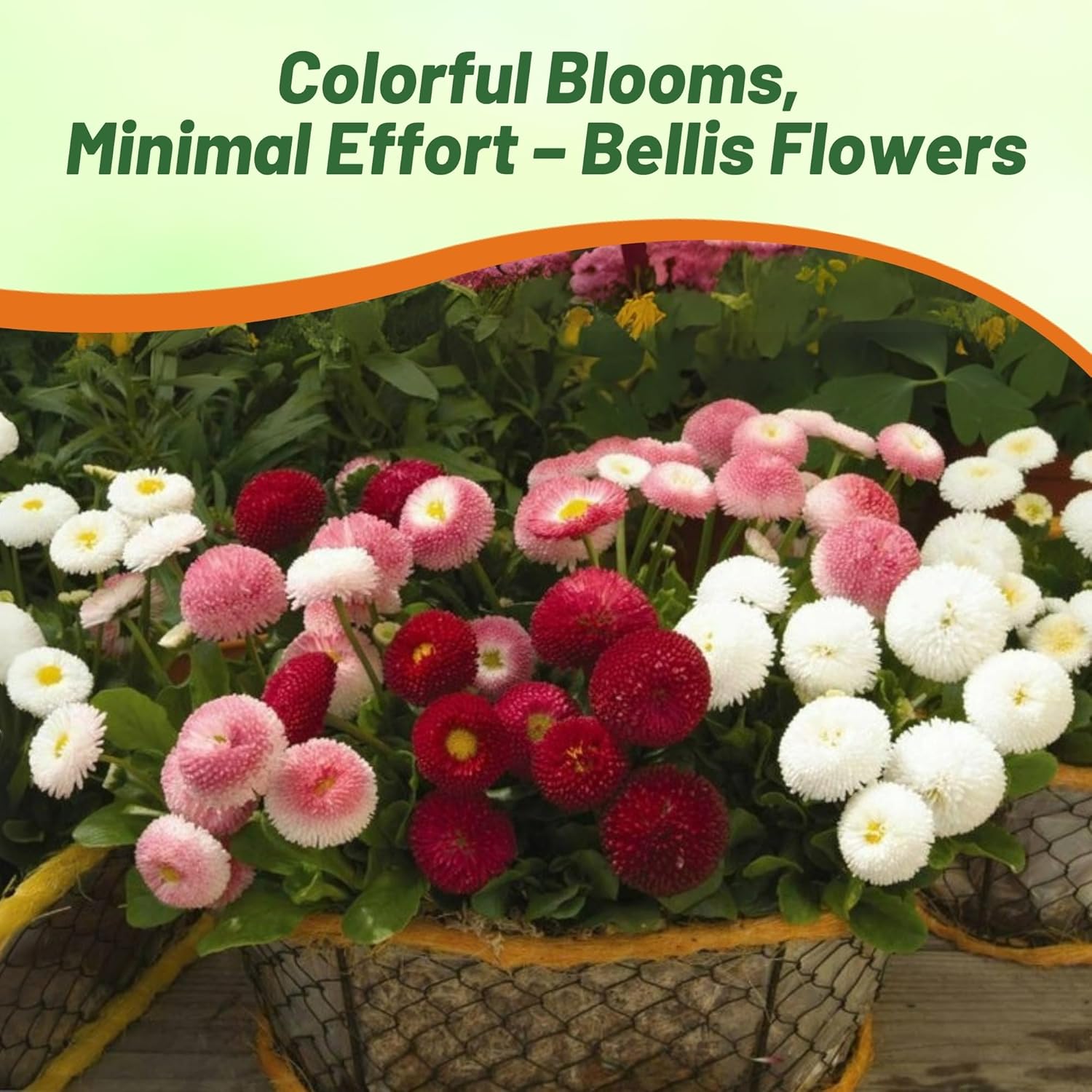

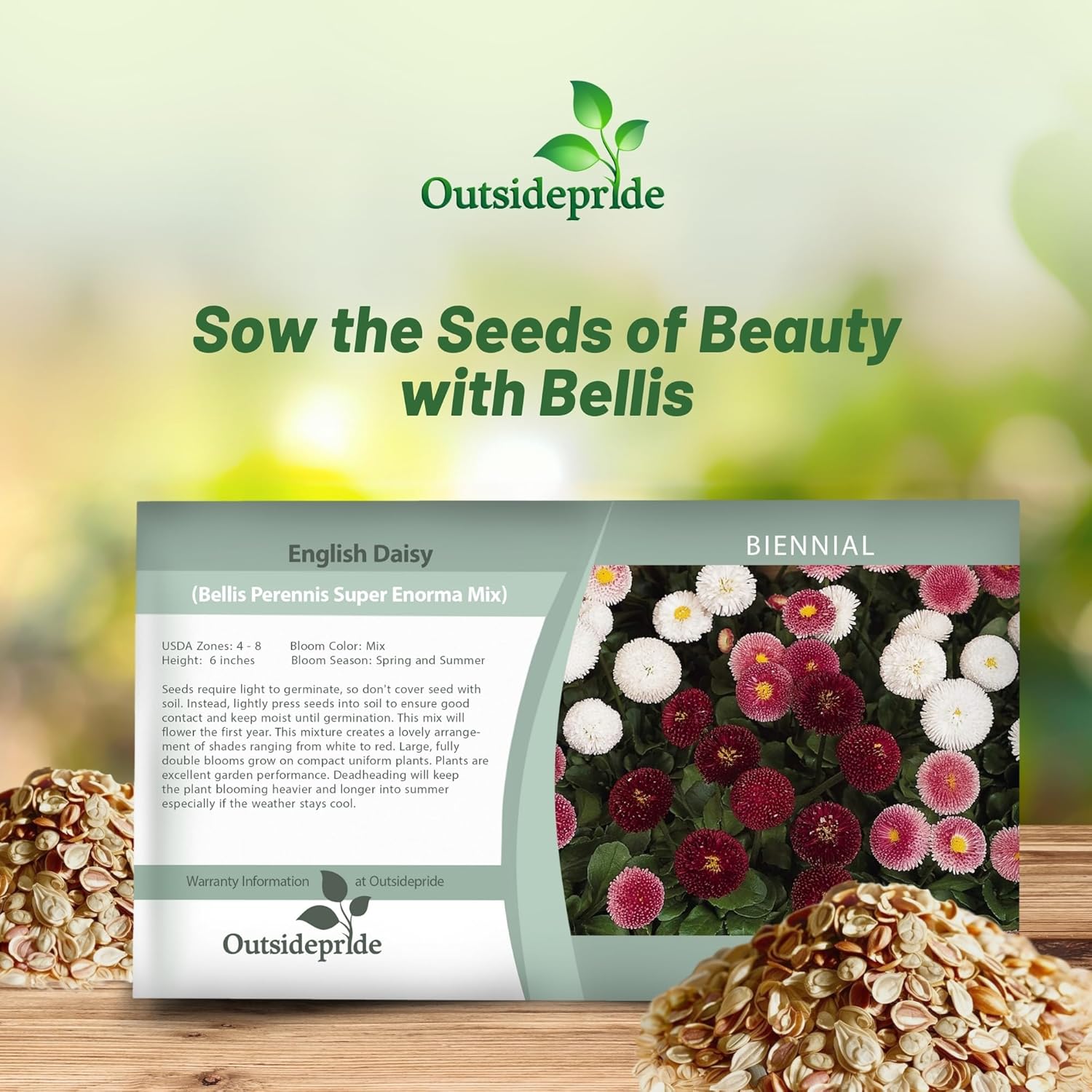
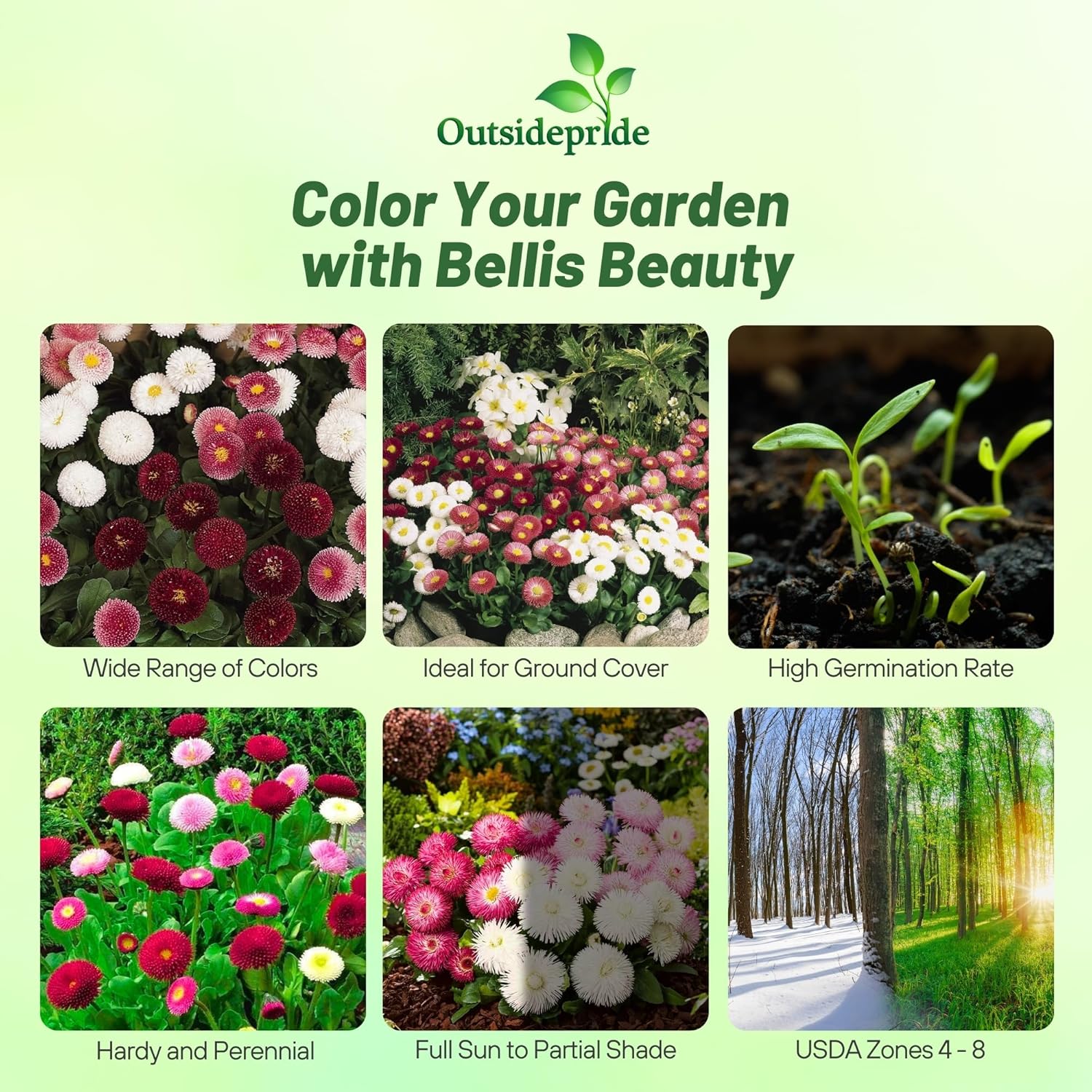
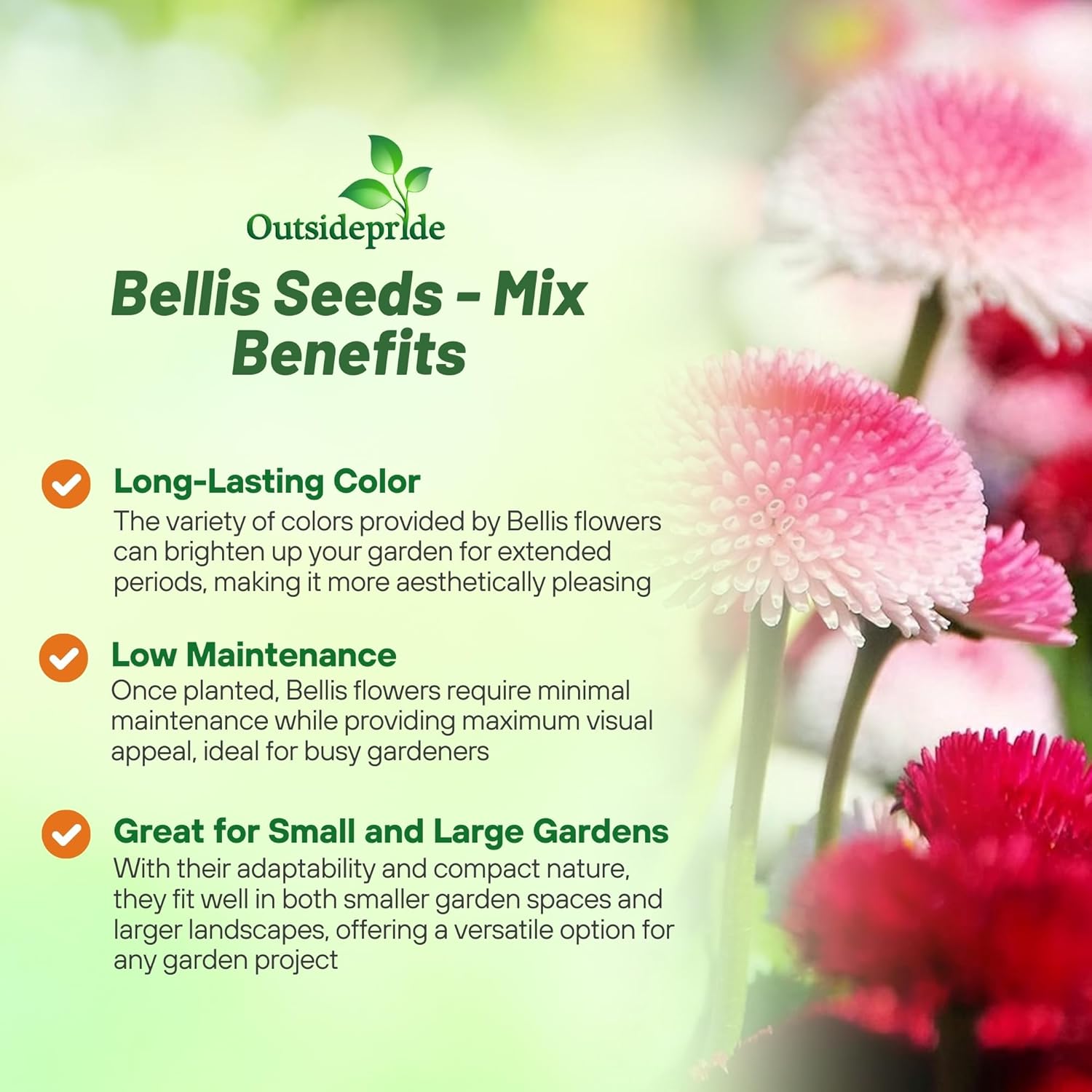
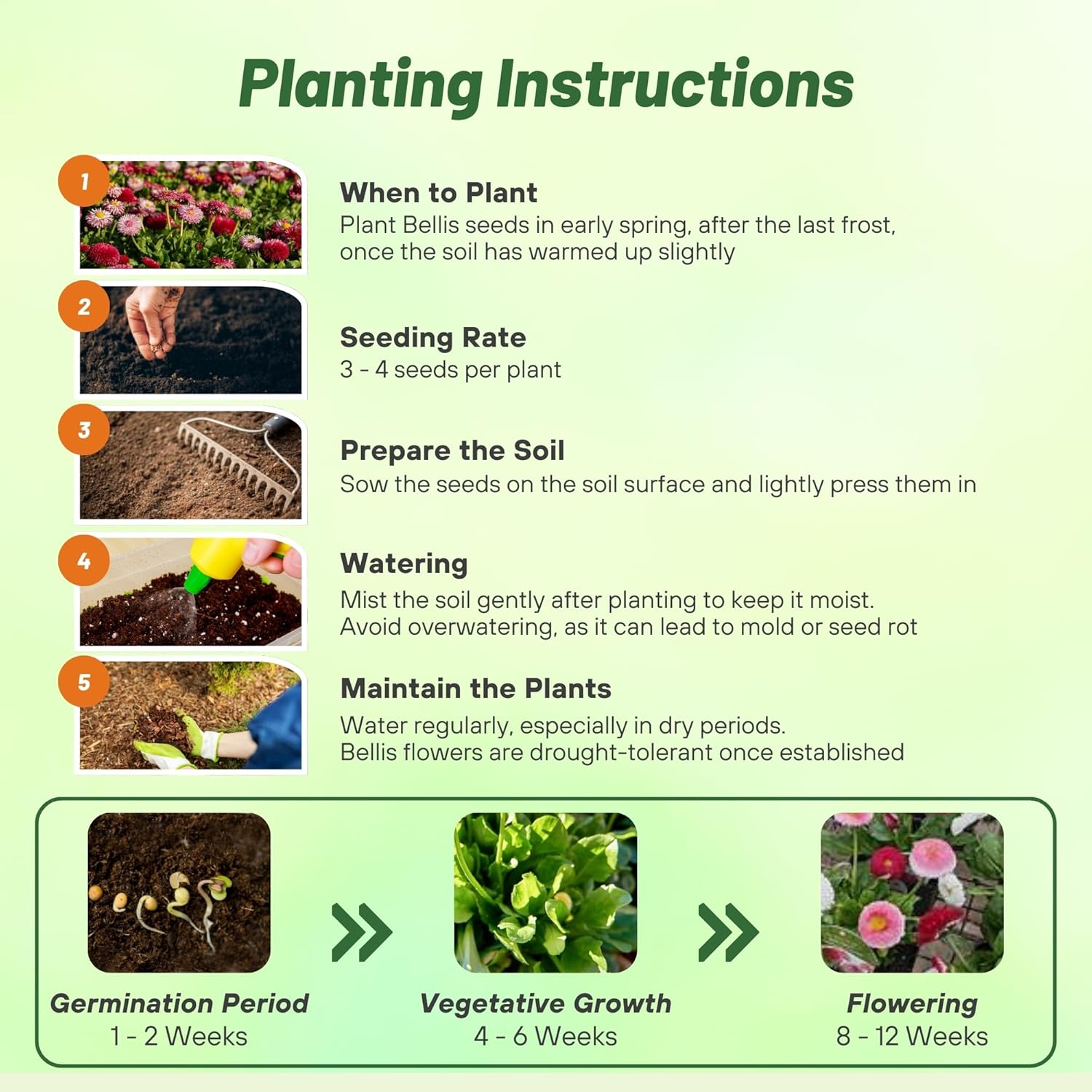
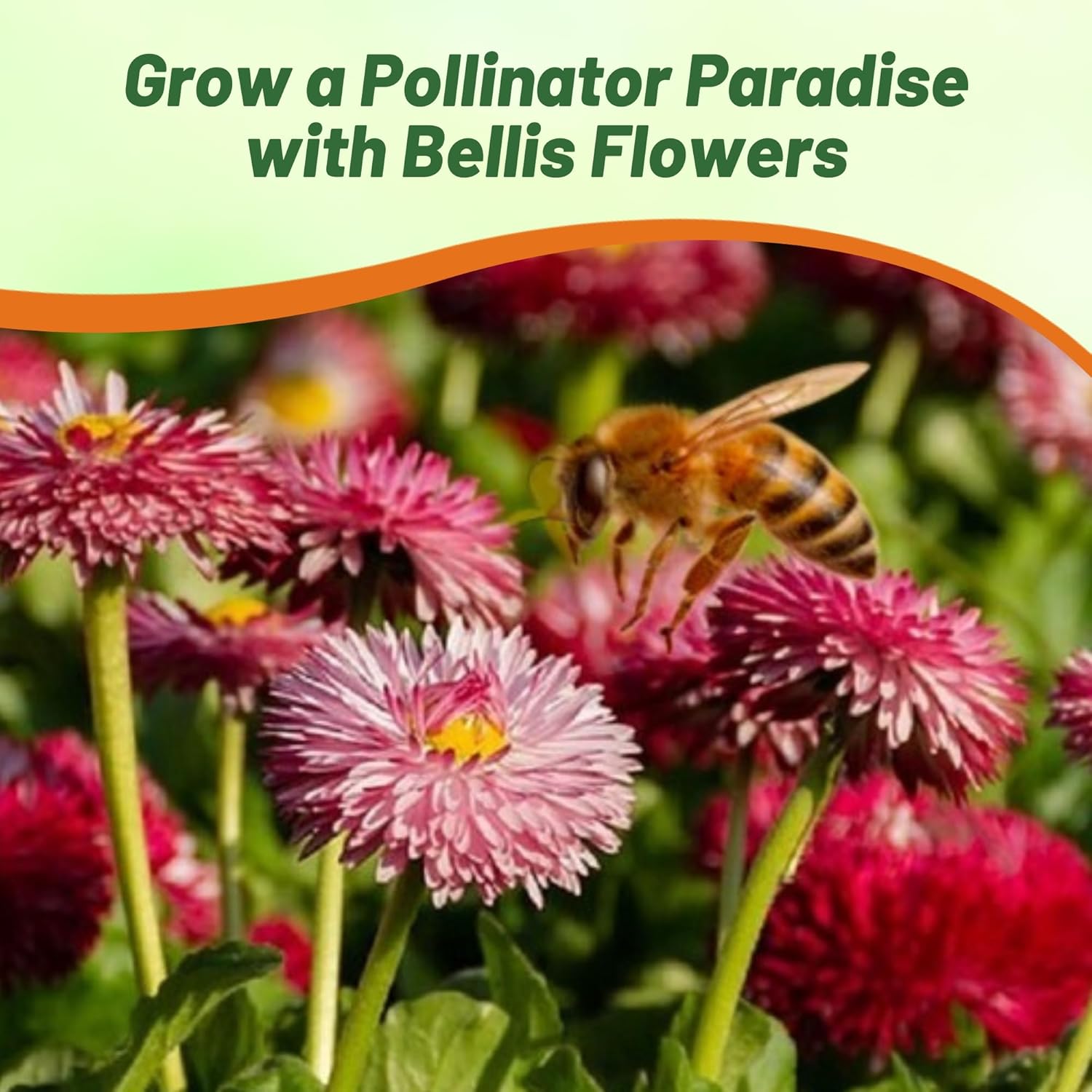

Bellis Seeds - Mix
SEASON
Biennial
USDA ZONES
4 - 8
HEIGHT
6 inches
BLOOM SEASON
Spring and summer
BLOOM COLOR
Mix
ENVIRONMENT
Full sun to partial shade
SOIL TYPE
Well-drained, pH 6.6 to 7.5
DEER RESISTANT
Yes
HOUSE PLANT
No
SEASON
Biennial
USDA ZONES
4 - 8
HEIGHT
4 - 6 inches
BLOOM SEASON
Spring and summer
BLOOM COLOR
Red
ENVIRONMENT
Full sun to partial shade
SOIL TYPE
Well-drained, pH 6.6 to 7.5
DEER RESISTANT
Yes
HOUSE PLANT
No
SEASON
Biennial
USDA ZONES
4 - 8
HEIGHT
4 - 6 inches
BLOOM SEASON
Spring and summer
BLOOM COLOR
Rose
ENVIRONMENT
Full sun to partial shade
SOIL TYPE
Well-drained, pH 6.6 to 7.5
DEER RESISTANT
Yes
HOUSE PLANT
No
SEASON
Biennial
USDA ZONES
4 - 8
HEIGHT
4 - 6 inches
BLOOM SEASON
Spring and summer
BLOOM COLOR
White
ENVIRONMENT
Full sun to partial shade
SOIL TYPE
Well-drained, pH 6.6 to 7.5
DEER RESISTANT
Yes
HOUSE PLANT
No
About...
English Daisy (Bellis Perennis Super Enorma Mix) - This Bellis flower seed is a mixture of English Daisy seeds that creates a lovely arrangement of shades ranging from white to red. Large, fully double English Daisy blooms grow on compact uniform plants.
MORE BELLIS OPTIONS
Planting Directions
TEMPERATURE
70F
AVERAGE GERM TIME
14 - 28 days
LIGHT REQUIRED
Yes
DEPTH
Do not cover
SOWING RATE
3 - 4 seeds per plant
MOISTURE
Keep moist until germination
PLANT SPACING
6 - 8 inches

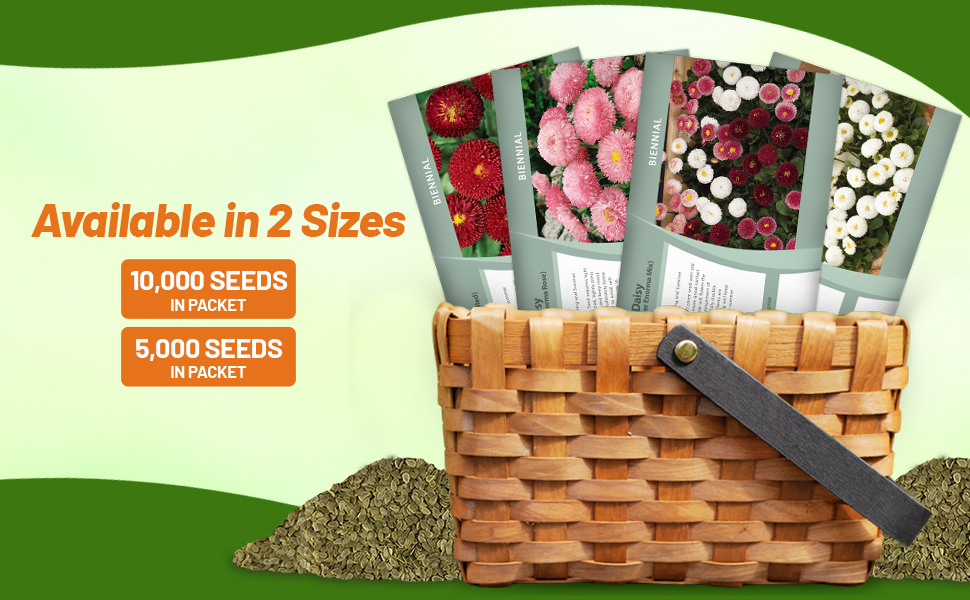

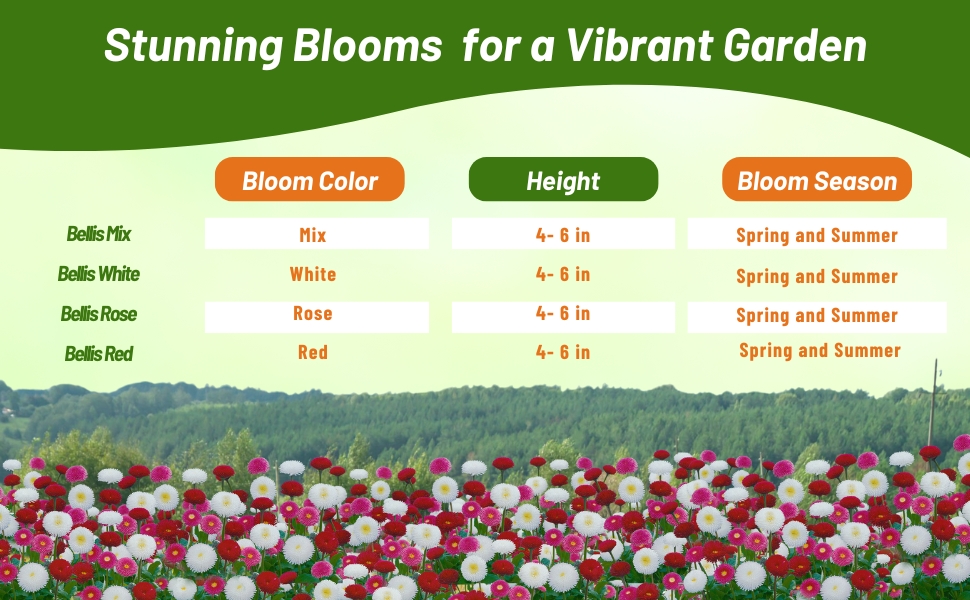

English Daisy (Bellis Perennis Super Enorma Mix) - This Bellis flower seed is a mixture of English Daisy seeds that creates a lovely arrangement of shades ranging from white to red. Large, fully double English Daisy blooms grow on compact uniform plants. Bellis English Daisy plants are excellent garden performance.
Common Questions
Do English daisies come back every year?
This plant easily reseeds itself so yes, they return every year. If you do not want the daisies to come back, remove the entire plant after they bloom and before the flowers produce seeds.
Are English daisies drought-tolerant?
No, this flower is not drought-tolerant and needs moisture to thrive.
My English daisy’s are wilting, why?
Most likely your plants need more water. They do not do well in dry conditions and need regular watering in the absence of rain.
Do I need to deadhead my English daisy’s?
No, you do not need to prune or deadhead your English daisy plants.
Help! My English Daisy plants are not blooming?
This could be due to three things: They are first-year plants so you will need to wait another year to see them bloom. It could be a lack of sun, they need four to six hours of daily sunlight. Or, they could be getting too much nitrogen and a quick-release liquid high-phosphorus fertilizer could remedy that. However, in hotter zones, a break from the afternoon sun will keep them blooming longer.
Planting Directions
TEMPERATURE
70F
AVERAGE GERM TIME
14 - 28 days
LIGHT REQUIRED
Yes
DEPTH
Do not cover
SOWING RATE
3 - 4 seeds per plant
MOISTURE
Keep moist until germination
PLANT SPACING
6 - 8 inches
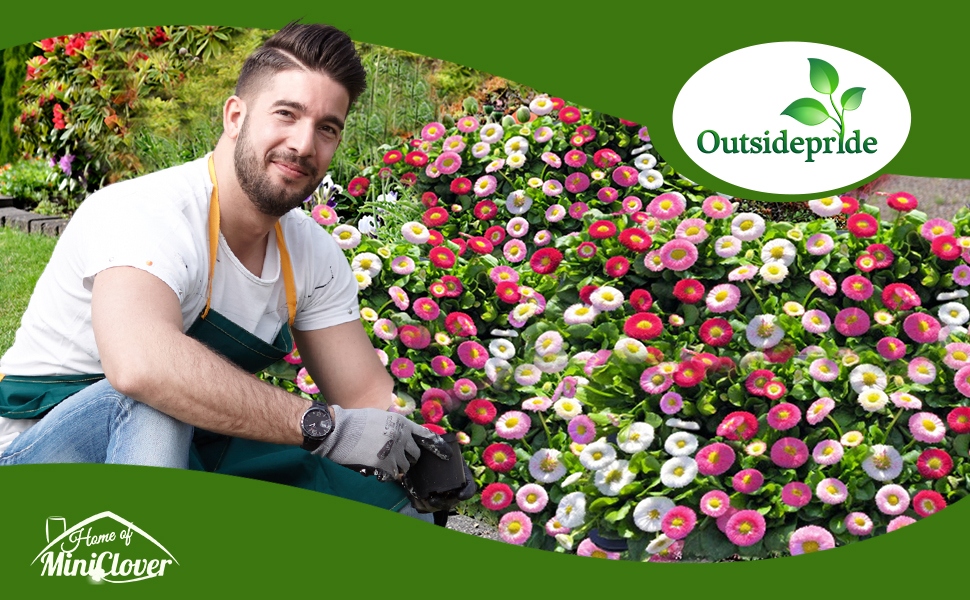
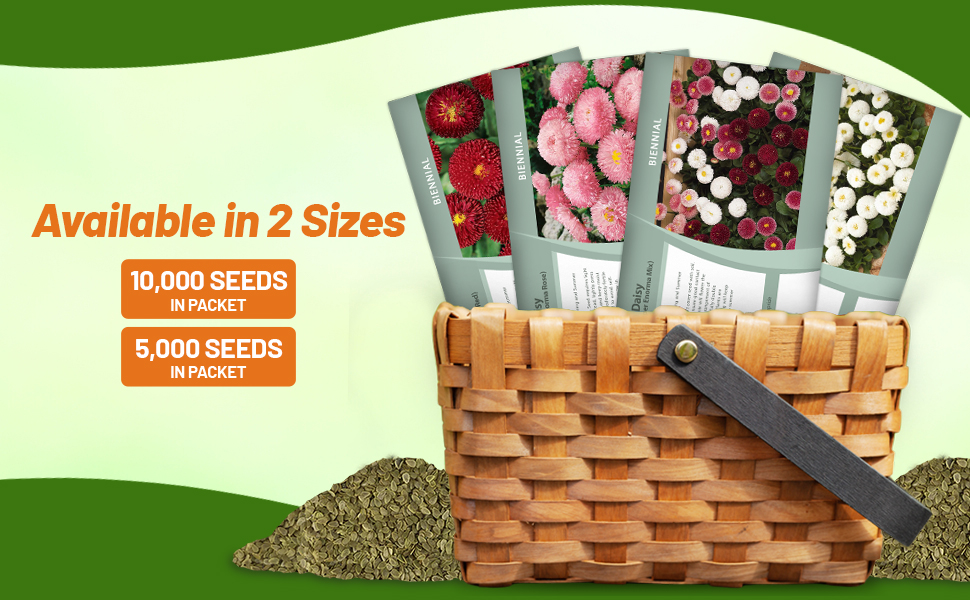
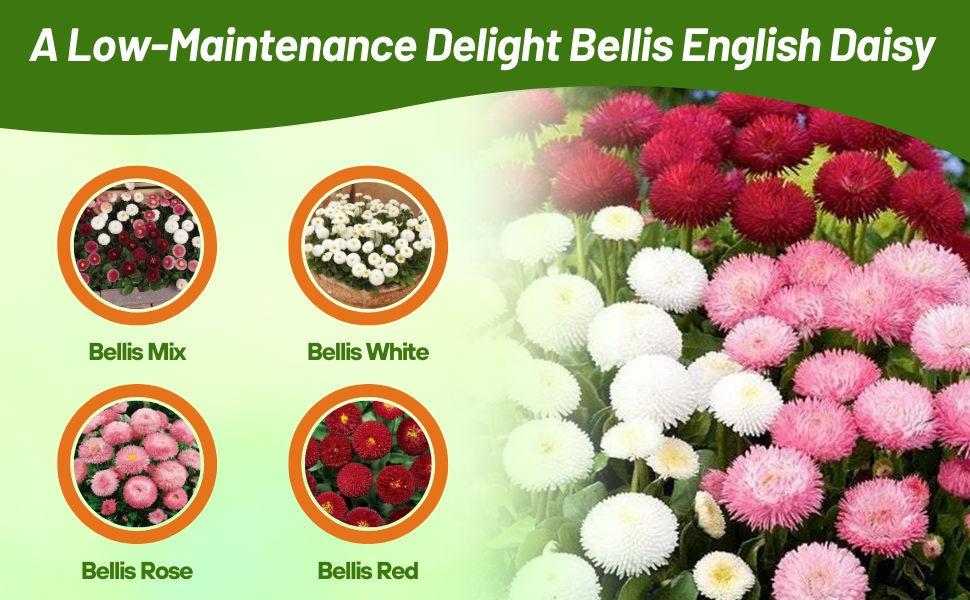
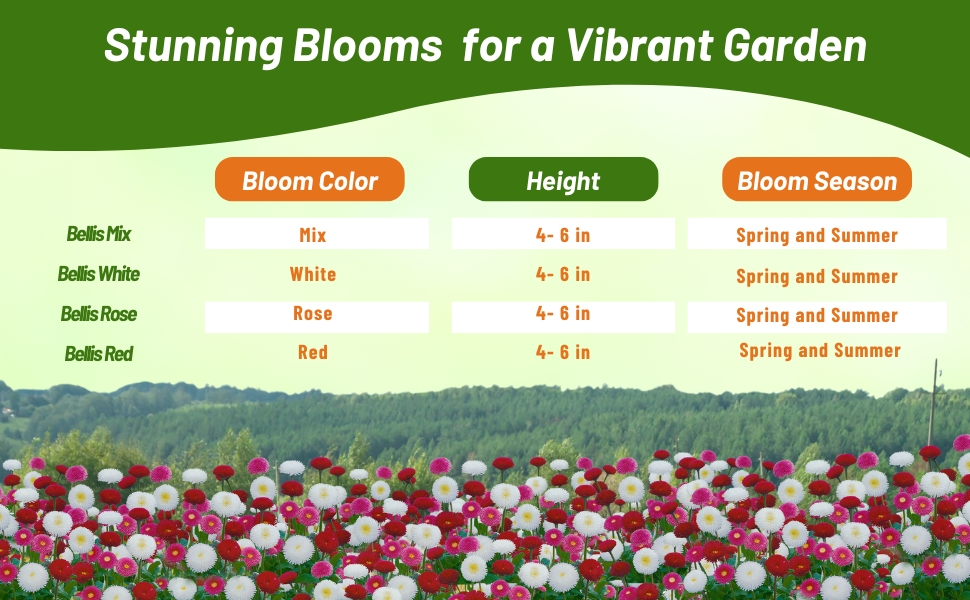

English Daisy (Bellis Perennis Super Enorma Red) - The Bellis English Daisy is great for early season color, and it is easily established by growing English Daisy seeds. The pompom-like flowers are bright red and are born on 3 - 5 inch stems. This red English Daisy flower combines well with other spring flowering perennials or bulbs.
Common Questions
Do English daisies come back every year?
This plant easily reseeds itself so yes, they return every year. If you do not want the daisies to come back, remove the entire plant after they bloom and before the flowers produce seeds.
Are English daisies drought-tolerant?
No, this flower is not drought-tolerant and needs moisture to thrive.
My English daisy’s are wilting, why?
Most likely your plants need more water. They do not do well in dry conditions and need regular watering in the absence of rain.
Do I need to deadhead my English daisy’s?
No, you do not need to prune or deadhead your English daisy plants.
Help! My English Daisy plants are not blooming?
This could be due to three things: They are first-year plants so you will need to wait another year to see them bloom. It could be a lack of sun, they need four to six hours of daily sunlight. Or, they could be getting too much nitrogen and a quick-release liquid high-phosphorus fertilizer could remedy that. However, in hotter zones, a break from the afternoon sun will keep them blooming longer.
Planting Directions
TEMPERATURE
70F
AVERAGE GERM TIME
14 - 28 days
LIGHT REQUIRED
Yes
DEPTH
Do not cover
SOWING RATE
3 - 4 seeds per plant
MOISTURE
Keep moist until germination
PLANT SPACING
6 - 8 inches
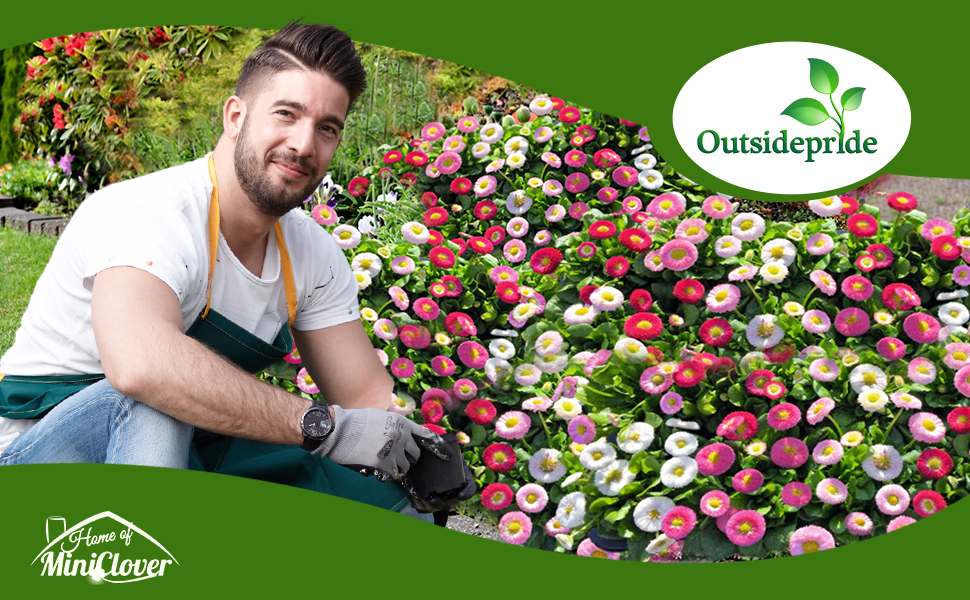
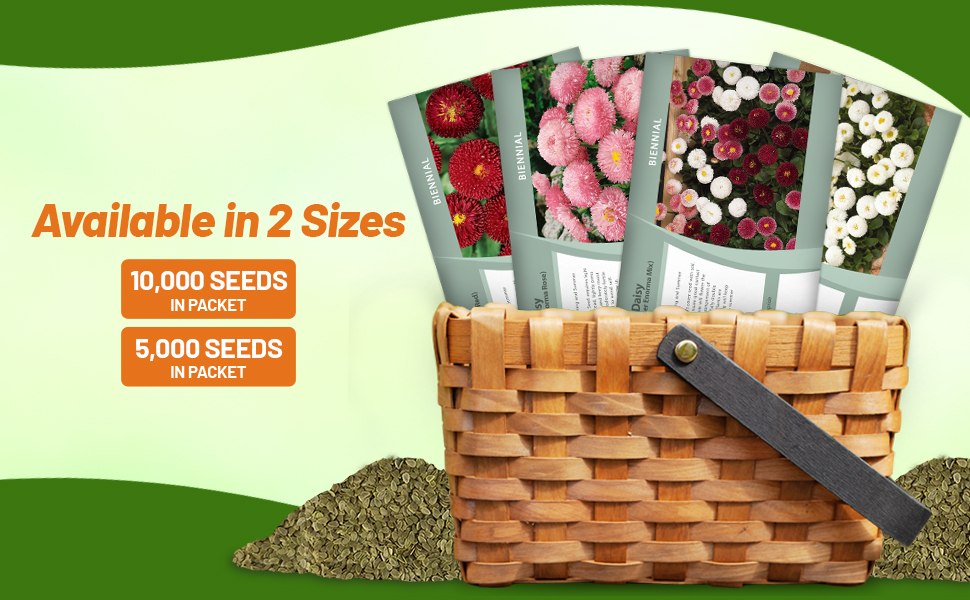
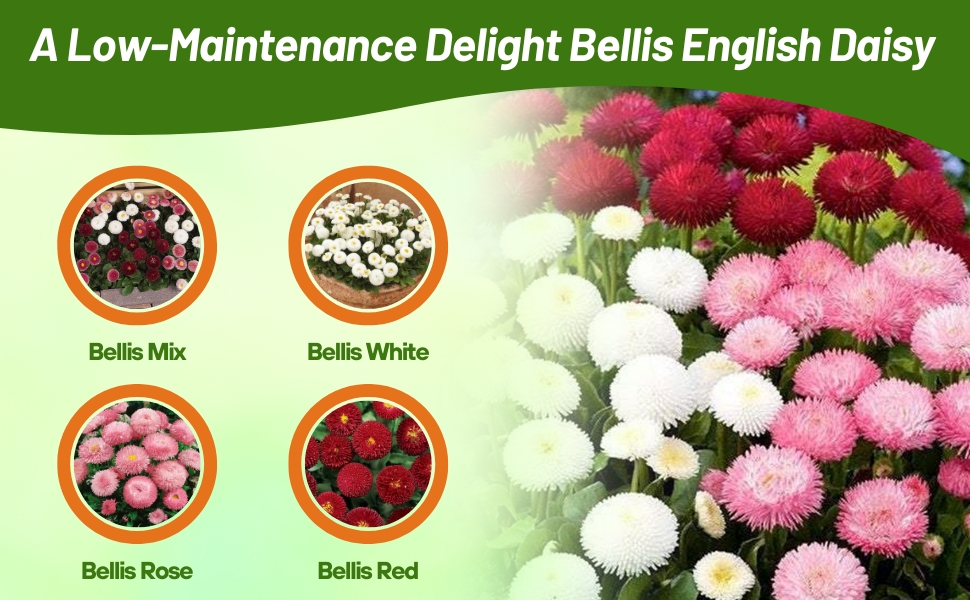
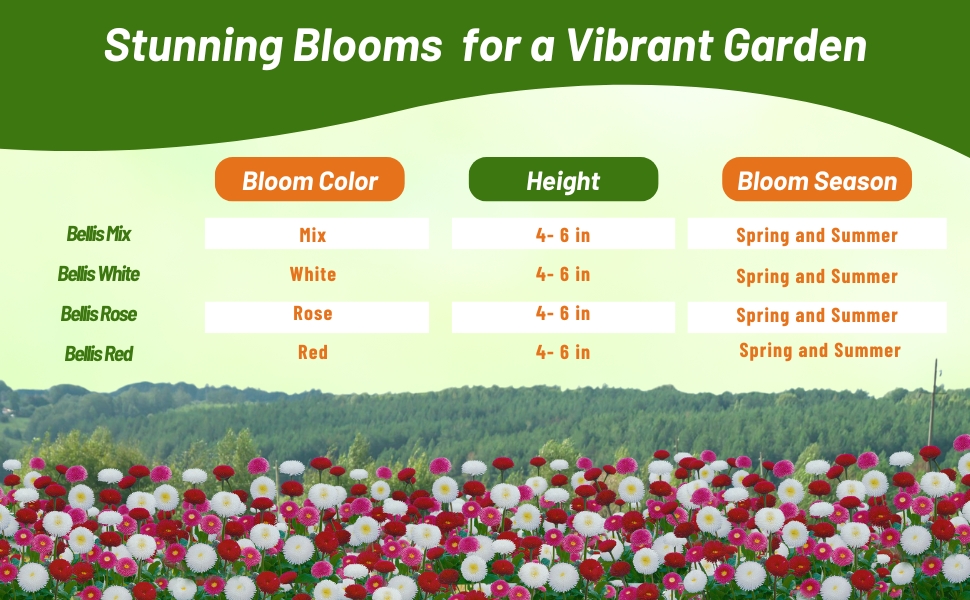

English Daisy (Bellis Perennis Super Enorma Rose) - Start this little charmer with Bellis flower seeds! English Daisy blooms profusely over a long period in late winter and into summer if the temperatures stay cool. Bellis English Daisy is perfect for planting over the top of spent spring bulbs. Bellis has deep green lance shaped leaves and rose colored button blooms that are fully double. It tolerates arid soils well and is a perfect plant to create borders and line walk-ways.
Bellis is often used as a ground cover that does well with other rock garden plants. It is low-growing and generally spreads wider than it is tall. Bellis English Daisy plants can grow in full sun to partial shade in a wide arrange of soils; however, it prefers well-drained soils. They readily establish in the garden with Bellis Perennis seeds. English Daisy flower seed requires light to germinate, so don't cover it with soil. Instead, lightly press the flower seeds into the soil to ensure good contact and keep moist until germination.
Common Questions
Do English daisies come back every year?
This plant easily reseeds itself so yes, they return every year. If you do not want the daisies to come back, remove the entire plant after they bloom and before the flowers produce seeds.
Are English daisies drought-tolerant?
No, this flower is not drought-tolerant and needs moisture to thrive.
My English daisy’s are wilting, why?
Most likely your plants need more water. They do not do well in dry conditions and need regular watering in the absence of rain.
Do I need to deadhead my English daisy’s?
No, you do not need to prune or deadhead your English daisy plants.
Help! My English Daisy plants are not blooming?
This could be due to three things: They are first-year plants so you will need to wait another year to see them bloom. It could be a lack of sun, they need four to six hours of daily sunlight. Or, they could be getting too much nitrogen and a quick-release liquid high-phosphorus fertilizer could remedy that. However, in hotter zones, a break from the afternoon sun will keep them blooming longer.
Planting Directions
TEMPERATURE
70F
AVERAGE GERM TIME
14 - 28 days
LIGHT REQUIRED
Yes
DEPTH
Do not cover
SOWING RATE
3 - 4 seeds per plant
MOISTURE
Keep moist until germination
PLANT SPACING
6 - 8 inches
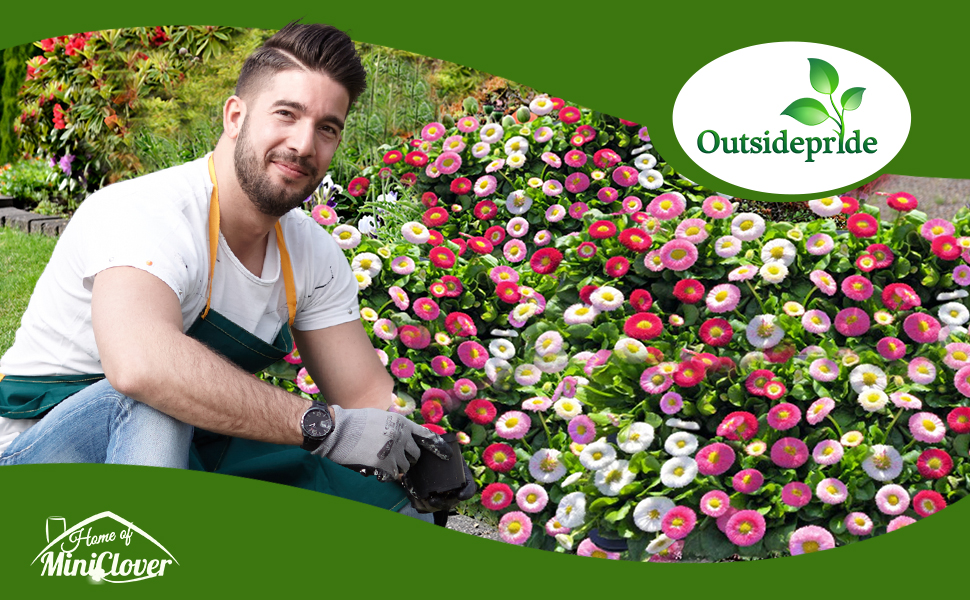
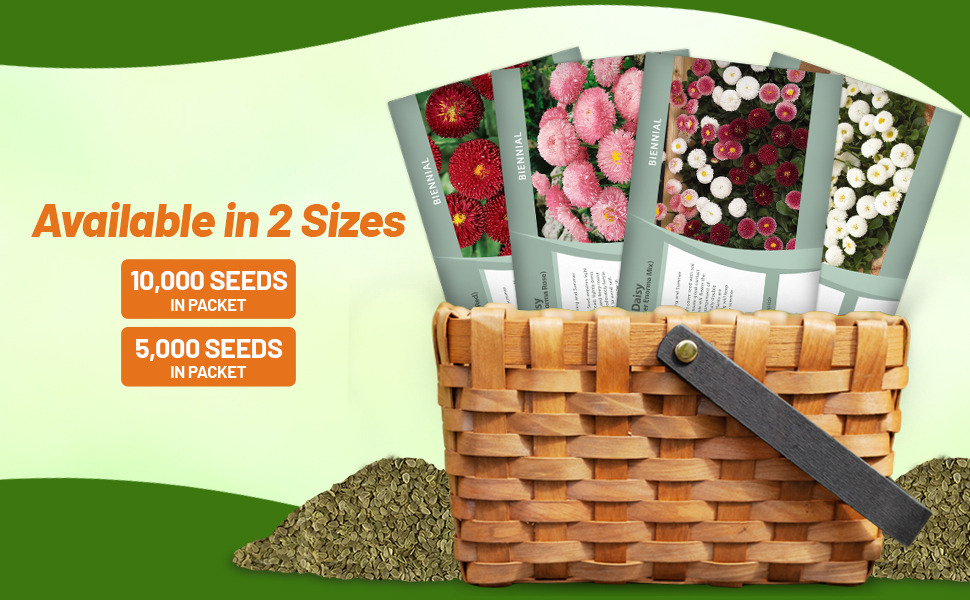
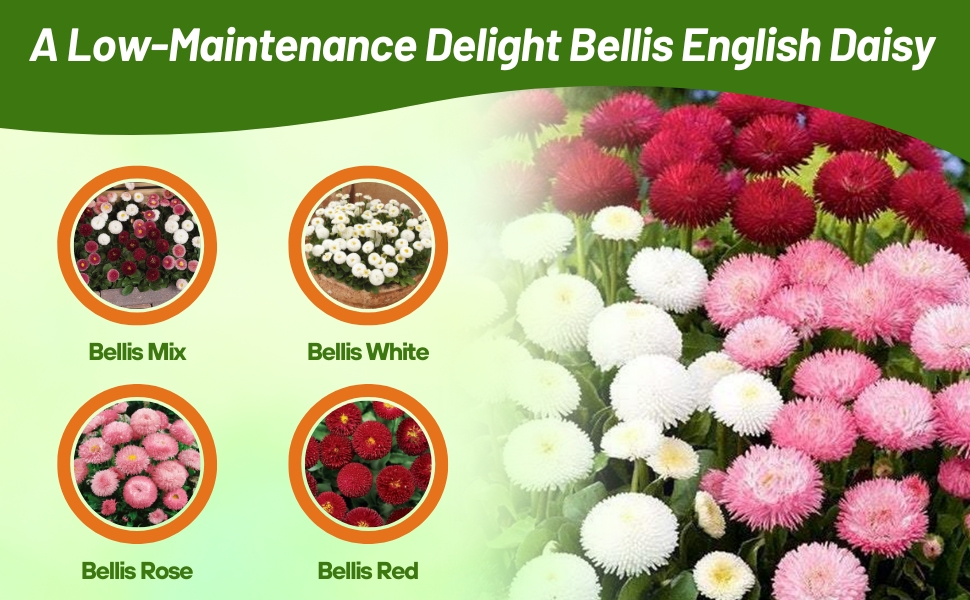
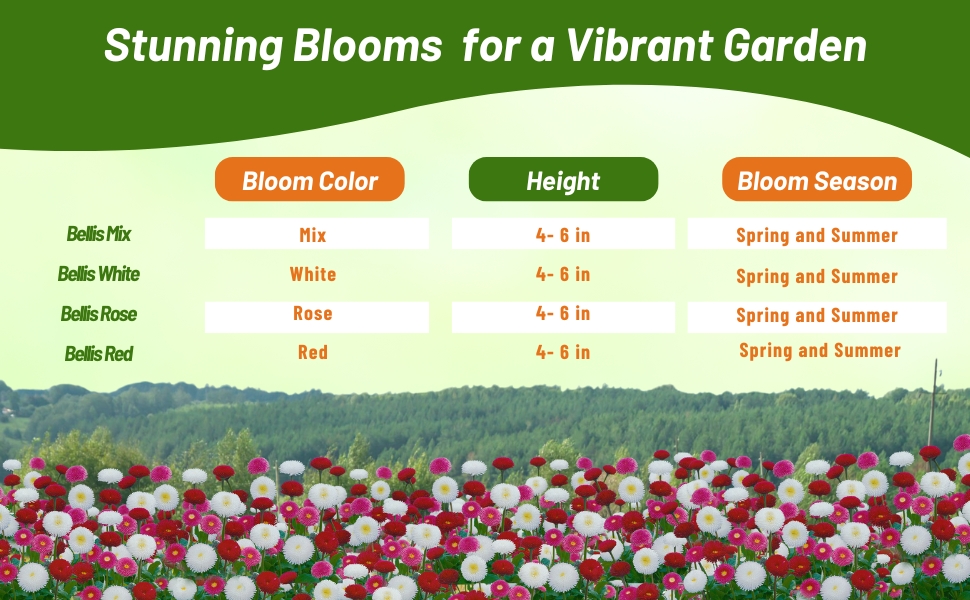

English Daisy (Bellis Perennis Super Enorma White) - Bellis Perennis seeds can be started directly outdoors, and are so much more than the sweet little lawn flowers that are common low-growing daisies called English Daisy. This Bellis English Daisy cultivar is larger and much showier.
Common Questions
Do English daisies come back every year?
This plant easily reseeds itself so yes, they return every year. If you do not want the daisies to come back, remove the entire plant after they bloom and before the flowers produce seeds.
Are English daisies drought-tolerant?
No, this flower is not drought-tolerant and needs moisture to thrive.
My English daisy’s are wilting, why?
Most likely your plants need more water. They do not do well in dry conditions and need regular watering in the absence of rain.
Do I need to deadhead my English daisy’s?
No, you do not need to prune or deadhead your English daisy plants.
Help! My English Daisy plants are not blooming?
This could be due to three things: They are first-year plants so you will need to wait another year to see them bloom. It could be a lack of sun, they need four to six hours of daily sunlight. Or, they could be getting too much nitrogen and a quick-release liquid high-phosphorus fertilizer could remedy that. However, in hotter zones, a break from the afternoon sun will keep them blooming longer.































